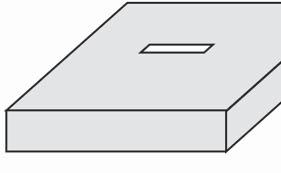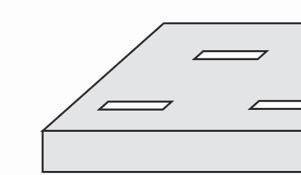Substrate-Integrated Millimeter-Wave Antennas for Next-Generation Communication and Radar Systems 1st Edition Zhi Ning Chen
Visit to download the full and correct content document: https://ebookmass.com/product/substrate-integrated-millimeter-wave-antennas-for-ne xt-generation-communication-and-radar-systems-1st-edition-zhi-ning-chen/
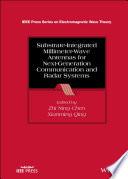
More products digital (pdf, epub, mobi) instant download maybe you interests ...

Millimeter-Wave Digitally Intensive Frequency Generation in CMOS 1st Edition Long
https://ebookmass.com/product/millimeter-wave-digitallyintensive-frequency-generation-in-cmos-1st-edition-long/
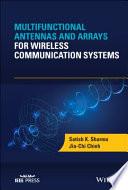
Multifunctional Antennas and Arrays for Wireless Communication Systems (Wiley - IEEE) 1st Edition
https://ebookmass.com/product/multifunctional-antennas-andarrays-for-wireless-communication-systems-wiley-ieee-1st-edition/
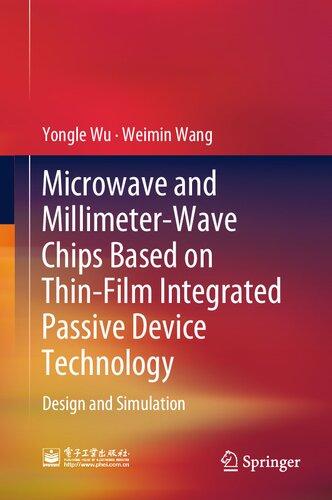
Microwave and Millimeter-Wave Chips Based on Thin-Film Integrated Passive Device Technology. Design and Simulation Yongle Wu
https://ebookmass.com/product/microwave-and-millimeter-wavechips-based-on-thin-film-integrated-passive-device-technologydesign-and-simulation-yongle-wu/

Dynamic Intentions: DCMC Next Generation (DreamCatcher MC Next Generation Book 1) Liberty Parker
https://ebookmass.com/product/dynamic-intentions-dcmc-nextgeneration-dreamcatcher-mc-next-generation-book-1-liberty-parker/

Materials and Processes for Next Generation Lithography
1st Edition Alex Robinson And Richard Lawson (Eds.)
https://ebookmass.com/product/materials-and-processes-for-nextgeneration-lithography-1st-edition-alex-robinson-and-richardlawson-eds/
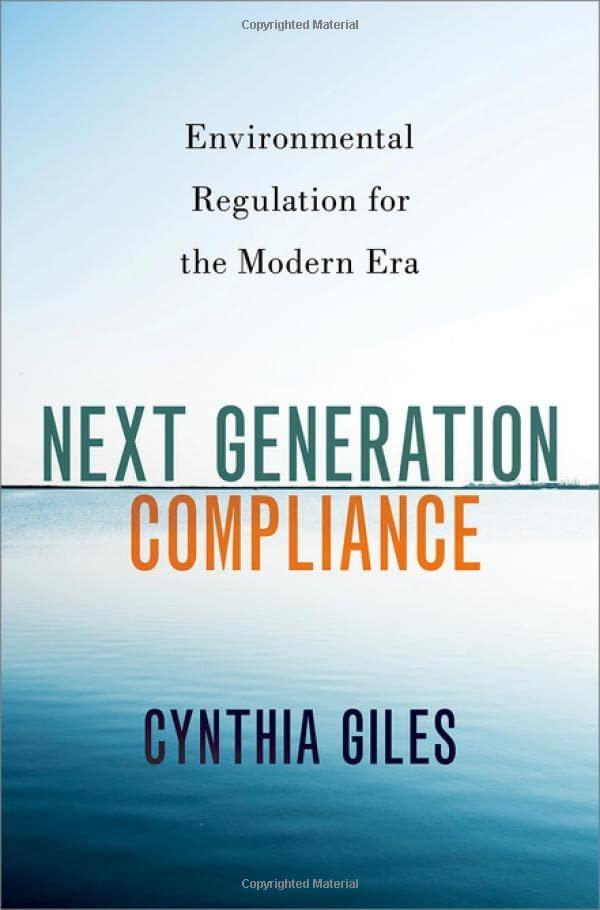
Next Generation Compliance: Environmental Regulation for the Modern Era Cynthia Giles
https://ebookmass.com/product/next-generation-complianceenvironmental-regulation-for-the-modern-era-cynthia-giles/

Systems Immunology and Infection Microbiology 1st Edition Bor-Sem Chen
https://ebookmass.com/product/systems-immunology-and-infectionmicrobiology-1st-edition-bor-sem-chen/

Technologies for Integrated Energy Systems and Networks
Giorgio Graditi
https://ebookmass.com/product/technologies-for-integrated-energysystems-and-networks-giorgio-graditi/

Conjugated
Polymers for Next-Generation Applications, Volume 1: Synthesis, Properties and Optoelectrochemical Devices Unknown
https://ebookmass.com/product/conjugated-polymers-for-nextgeneration-applications-volume-1-synthesis-properties-andoptoelectrochemical-devices-unknown/
Substrate-IntegratedMillimeter-WaveAntennasforNext-GenerationCommunication andRadarSystems
IEEEPress
445HoesLane
Piscataway,NJ08854
IEEEPressEditorialBoard
EkramHossain, EditorinChief
JónAtliBenediktssonXiaoouLiJeffreyReed AnjanBoseLianYongDiomidisSpinellis
DavidAlanGrierAndreasMolischSarahSpurgeon
ElyaB.JoffeSaeidNahavandiAhmetMuratTekalp
Editedby ZhiNingChen XianmingQing
Copyright©2021byTheInstituteofElectricalandElectronicsEngineers,Inc.Allrightsreserved.
PublishedbyJohnWiley&Sons,Inc.,Hoboken,NewJersey. PublishedsimultaneouslyinCanada.
Nopartofthispublicationmaybereproduced,storedinaretrievalsystem,ortransmittedinanyformorbyany means,electronic,mechanical,photocopying,recording,scanning,orotherwise,exceptaspermittedunderSection 107or108ofthe1976UnitedStatesCopyrightAct,withouteitherthepriorwrittenpermissionofthePublisher,or authorizationthroughpaymentoftheappropriateper-copyfeetotheCopyrightClearanceCenter,Inc.,222 RosewoodDrive,Danvers,MA01923,(978)750-8400,fax(978)750-4470,oronthewebatwww.copyright.com. RequeststothePublisherforpermissionshouldbeaddressedtothePermissionsDepartment,JohnWiley&Sons, Inc.,111RiverStreet,Hoboken,NJ07030,(201)748-6011,fax(201)748-6008,oronlineat http://www.wiley.com/go/permission.
LimitofLiability/DisclaimerofWarranty:Whilethepublisherandauthorhaveusedtheirbesteffortsinpreparing thisbook,theymakenorepresentationsorwarrantieswithrespecttotheaccuracyorcompletenessofthecontents ofthisbookandspecificallydisclaimanyimpliedwarrantiesofmerchantabilityorfitnessforaparticularpurpose. Nowarrantymaybecreatedorextendedbysalesrepresentativesorwrittensalesmaterials.Theadviceand strategiescontainedhereinmaynotbesuitableforyoursituation.Youshouldconsultwithaprofessionalwhere appropriate.Neitherthepublishernorauthorshallbeliableforanylossofprofitoranyothercommercialdamages, includingbutnotlimitedtospecial,incidental,consequential,orotherdamages.
Forgeneralinformationonourotherproductsandservicesorfortechnicalsupport,pleasecontactourCustomer CareDepartmentwithintheUnitedStatesat(800)762-2974,outsidetheUnitedStatesat(317)572-3993orfax(317) 572-4002.
Wileyalsopublishesitsbooksinavarietyofelectronicformats.Somecontentthatappearsinprintmaynotbe availableinelectronicformats.FormoreinformationaboutWileyproducts,visitourwebsiteatwww.wiley.com.
LibraryofCongressCataloging-in-PublicationData:
Names:Chen,ZhiNing,editor.|Qing,Xianming,editor.|JohnWiley& Sons,publisher.
Title:Substrate-integratedmillimeter-waveantennasfornext-generation communicationandradarsystems/editedbyZhiNingChen,Xianming Qing.
Othertitles:IEEEPressseriesonelectromagneticwavetheory
Description:Hoboken,NewJersey:Wiley,[2021]|Series:IEEEPress seriesonelectromagneticwavetheory|SeriesinformationfromCIPdata view.|Includesbibliographicalreferencesandindex.
Identifiers:LCCN2021003274(print)|LCCN2021003275(ebook)|ISBN 9781119611110(hardback)|ISBN9781119611127(adobepdf)|ISBN 9781119611158(epub)
Subjects:LCSH:Antennas(Electronics).|Millimeterwavecommunication systems.
Classification:LCCTK7871.6.S832021(print)|LCCTK7871.6(ebook)| DDC621.382/4–dc23
LCrecordavailableathttps://lccn.loc.gov/2021003274
LCebookrecordavailableathttps://lccn.loc.gov/2021003275
CoverDesign:Wiley
Setin9.5/12.5ptSTIXTwoTextbySPiGlobal,Chennai,India 10987654321
Contents
EditorBiographies xi
Contributors xv
Foreword xvii
Preface xix
1IntroductiontoMillimeterWaveAntennas 1 ZhiNingChen
1.1MillimeterWaves 1
1.2PropagationofMillimeterWaves 1
1.3MillimeterWaveTechnology 5
1.3.1ImportantFeatures 5
1.3.2MajorModernApplications 5
1.3.2.1Next-GenerationWirelessCommunications 5
1.3.2.2High-DefinitionVideoandVirtualRealityHeadsets 7
1.3.2.3AutomotiveCommunicationsandRadars 7
1.3.2.4BodyScannersandImaging 7
1.4UniqueChallengesofMillimeterWaveAntennas 8
1.5BriefingofState-of-the-ArtMillimeterWaveAntennas 9
1.6ImplementationConsiderationsofMillimeterWaveAntennas 11
1.6.1FabricationProcessesandMaterialsoftheAntennas 11
1.6.2CommonlyUsedTransmissionLineSystemsforAntennas 12
1.7NoteonLossesinMicrostrip-LinesandSubstrateIntegratedWaveguides 14
1.8UpdateofMillimeterWaveTechnologyin5GNRandBeyond 17
1.9Organizationofthebook 19
1.10Summary 21 References 21
2MeasurementMethodsandSetupsofAntennasat60–325GHzBands 25 XianmingQingandZhiNingChen
2.1Introduction 25
2.1.1Far-FieldAntennaMeasurementSetup 26
2.1.1.1Free-SpaceRangeUsingAnechoicChamber 26
2.1.1.2CompactRange 27
2.1.2Near-FieldAntennaMeasurementSetup 28
2.2State-of-the-ArtmmWMeasurementSystems 29
2.2.1CommerciallyAvailablemmWMeasurementSystems 29
2.2.2CustomizedmmWMeasurementSystems 31
2.3ConsiderationsforMeasurementSetupConfiguration 40
2.3.1Far-FieldversusNear-FieldversusCompactRange 40
2.3.1.1Far-FieldMeasurement 40
2.3.1.2Near-FieldMeasurement 40
2.3.1.3CompactAntennaTestRange 41
2.3.2RFSystem 41
2.3.3InterfaceBetweentheRFInstrumentandAUT 41
2.3.4On-WaferAntennaMeasurement 43
2.3.4.1FeedingandMovementLimitations 43
2.3.4.2ReflectionCausedbyProbes/MetallicEnvironment 43
2.3.4.3UndesiredCouplingEffectsCausedbyMeasurementProbes 44
2.4mmWMeasurementSetupExamples 45
2.4.160-GHzAntennaMeasurementSetup 45
2.4.2140-GHzAntennaMeasurementSetup 45
2.4.3270-GHzAntennaMeasurementSetup 47
2.5Summary 51 References 52
3SubstrateIntegratedmmWAntennasonLTCC 55 ZhiNingChenandXianmingQing
3.1Introduction 55
3.1.1UniqueDesignChallengesandPromisingSolutions 55
3.1.2SIWSlotAntennasandArraysonLTCC 56
3.2High-GainmmWSIWSlotAntennaArraysonLTCC 59
3.2.1SIWThree-DimensionalCorporateFeed 59
3.2.2SubstrateIntegratedCavityAntennaArrayat60GHz 62
3.2.3SimplifiedDesignsandHigh-Order-ModeAntennaArrayat140GHz 69
3.2.3.1140-GHzSlotAntennaArraywithaLarge-Via-FenceDielectricLoading 70
3.2.3.2140-GHzSlotAntennaArraywithaLarge-Via-FenceandLarge-SlotDielectric Loading 73
3.2.3.3140-GHzSlotAntennaArrayOperatingataHigher-OrderMode(TE20 Mode) 75
3.2.4FullySubstrateIntegratedAntennasat270GHz 82
3.2.4.1AnalysisofLTCC-BasedSubstrateIntegratedStructures 83
3.2.4.2FresnelZonePlateAntennainLTCCat270GHz 85
3.3Summary 88 References 88
4BroadbandMetamaterial-MushroomAntennaArrayat60GHzBands 93 WeiLiuandZhiNingChen
4.1Introduction 93
4.2BroadbandLow-ProfileCRLH-MushroomAntenna 96
4.2.1WorkingPrinciple 96
4.2.2ImpedanceMatching 99
4.3BroadbandLTCCMetamaterial-MushroomAntennaArrayat60GHz 100
4.3.1SIWFedCRLH-MushroomAntennaElement 100
4.3.2Self-DecouplingFunctionality 103
4.3.3Self-DecoupledMetamaterial-MushroomSubarray 106
4.3.4Metamaterial-MushroomAntennaArray 107
4.4Summary 110 References 111
5Narrow-Wall-FedSubstrateIntegratedCavityAntennaat60GHz 115 YanZhang
5.1Introduction 115
5.2BroadbandTechniquesforSubstrateIntegratedAntennas 116
5.2.1EnhancementoftheImpedanceMatchingforSIWAntennas 118
5.2.2Multi-ModeSubstrateIntegratedCavityAntennas 121
5.2.3SubstrateIntegratedCavityBackedSlotAntenna 122
5.2.4PatchLoadedSubstrateIntegratedCavityAntenna 130
5.2.5Traveling-WaveElementsLoadedSubstrateIntegratedCavityAntenna 136
5.3SIWNarrowWallFedSICAntennasat Ka-and V -Bands 140
5.3.1SIWNarrowWallFedSICAntenna 141
5.3.2SIWNarrowWallFedSICAntennaArrayat35GHz 145
5.3.360-GHzSIWNarrowWallFedSICAntennaArray 146
5.4Summary 151 References 151
6Cavity-BackedSIWSlotAntennasat60GHz 155 KeGong
6.1Introduction 155
6.2OperatingPrincipleoftheCavity-BackedAntenna 156
6.2.1Configuration 156
6.2.2AnalysisoftheBacking-Cavity 156
6.2.3DesignoftheBacking-Cavity 157
6.3Cavity-BackedSIWSlotAntenna 158
6.3.1FeedingTechniques 158
6.3.2SIWBacking-Cavity 160
6.3.3RadiatingSlot 162
6.4TypesofSIWCBSAs 163
6.4.1WidebandCBSAs 163
6.4.2Dual-BandCBSAs 165
6.4.3Dual-PolarizedandCircularlyPolarizedCBSAs 166
6.4.4MiniaturizedCBSAs 166
6.5CBSADesignExamplesat60GHz 167
6.5.1SIWCBSAwithDifferentSlotWLR 167
6.5.2ArrayExampleswithDifferentWLRsofSlot 169
6.6Summary 172 References 172
7CircularlyPolarizedSIWSlotLTCCAntennasat60GHz 177 YueLi
7.1Introduction 177
7.2KeyTechniquesofmmWCPAntennaArray 177
7.2.1AntennaElementSelection 177
7.2.2ARBandwidthEnhancementMethods 182
7.3WidebandCPLTCCSIWAntennaArrayat60GHz 183
7.3.1WidebandARElement 184
7.3.2IsolationConsideration 186
7.3.3ExperimentResultsandDiscussion 189
7.4Summary 193 References 194
8GainEnhancementofLTCCMicrostripPatchAntennabySuppressingSurface Waves 197 ZhiNingChenandXianmingQing
8.1Introduction 197
8.1.1SurfaceWavesinMicrostripPatchAntennas 197
8.1.2SurfaceWavesEffectsonMicrostripPatchAntenna 199
8.2State-of-the-ArtMethodsforSuppressingSurfaceWavesinMicrostripPatch Antennas 199
8.3MicrostripPatchAntennaswithPartialSubstrateRemoval 202
8.3.1TechniqueofPartialSubstrateRemoval 202
8.3.260-GHzLTCCAntennawithPartialSubstrateRemoval 205
8.4Summary 207 References 208
9SubstrateIntegratedAntennasforMillimeterWaveAutomotiveRadars 211 XianmingQingandZhiNingChen
9.1Introduction 211
9.1.1AutomotiveRadarClassification 211
9.1.2FrequencyBandsforAutomotiveRadars 212
9.1.3Comparisonof24GHzand77GHzBands 213
9.1.4AntennaSystemConsiderationsforAutomotiveRadarSensors 214
9.1.4.1LensAntennaandReflectorAntenna 214
9.1.4.2PlanarAntennas 214
9.1.5FabricationandPackagingConsiderations 216
9.2State-of-the-ArtAntennasfor24-GHzand77-GHzAutomotiveRadars 217
9.2.1SelectedState-of-the-ArtAntennasfor24-GHzAutomotiveRadars 217
9.2.1.1ShortedParasiticRhombicPatchAntennaArraywithLowerCross-Polarization Levels 217
9.2.1.2CompactTwo-LayerRotmanLens-FedMicrostripAntennaArray 218
9.2.1.3SIWParasiticAntennaArrayWithoutFeedingNetwork 220
9.2.1.4SIWPillboxAntennaIntegratingMonopulseAmplitude-ComparisonTechnique 220
9.2.2SelectedState-of-the-ArtAntennasfor77-GHzAutomotiveRadars 221
9.2.2.1SIWSlotArrayforBothMedium-andLong-RangeAutomotiveRadarSensor 221
9.2.2.216 × 16PhasedArrayAntenna/ReceiverPackagedUsingBond-WireTechnique 222
9.2.2.3Antenna/ModuleinPackage 223
9.3Single-LayerSIWSlotAntennaArrayfor24-GHzAutomotiveRadars 225
9.3.1AntennaConfiguration 225
9.3.2SlotArrayDesign 226
9.3.3FeedingNetworkDesign 227
9.3.4ExperimentResults 228
9.4Transmit-ArrayAntennafor77-GHzAutomotiveRadars 231
9.4.1UnitCell 232
9.4.2Four-BeamTransmit-Array 233
9.4.3Results 234
9.5Summary 236 Acknowledgments 236 References 236
10SidelobeReductionofSubstrateIntegratedAntennaArraysatKa-Band 241 TengLi
10.1Introduction 241
10.2FeedingNetworksforSubstrateIntegratedAntennaArray 242
10.2.1SeriesFeedingNetwork 242
10.2.2Parallel/CorporateFeedingNetwork 244
10.2.3FlatLens/Reflector-BasedQuasi-OpticsFeedingNetwork 245
10.2.4PowerDividers 246
10.3SIWAntennaArrayswithSidelobeReductionatKa-Band 247
10.3.1Double-Layer8 × 8SIWSlotArray 247
10.3.1.1ParameterExtractionofRadiatingSlots 247
10.3.1.2FeedingNetwork 249
10.3.1.3SimulationsandExperiments 249
10.3.216 × 16MonopulseSIWSlotArray 251
10.3.2.1SeriesT-JunctionFeedingNetwork 252
10.3.2.2Sum-DifferenceNetwork 253
10.3.2.3SimulationsandExperiments 254
10.4Summary 256 References 257
11SubstrateEdgeAntennas 259 LeiWangandXiaoxingYin
11.1Introduction 259
11.2State-of-the-Art 261
11.2.1End-FireSEAs 261
11.2.2Leaky-WaveSEAs 263
11.3TaperedStripsforWidebandImpedanceMatching 264
11.3.1TaperedTriangularStrips 265
11.3.2TaperedRectangularStrips 266
11.4EmbeddedPlanarLensforGainEnhancement 268
11.4.1EmbeddedMetallicLens 269
11.4.2EmbeddedGapLens 271
11.5PrismLensforBroadbandFixed-BeamLeaky-WaveSEAs 272
11.6Summary 282 References 283
Index 287
EditorBiographies
ZhiNingCHEN (Fellow,IEEEandFellow,SAEng)receivedhisB.Eng.,M.Eng.,andPh.D.degrees inelectricalengineeringfromtheInstituteofCommunicationsEngineering(ICE),China,in1985, 1998,and1993andasecondPh.D.degreefromtheUniversityofTsukuba,Tsukuba,Japan,in2003. From1988to1995,Dr.ChenwasalecturerandlateraprofessorwithICEandapost-doctoral fellowandlateranassociateprofessorwithSoutheastUniversity,Nanjing,China.From1995to 1997,hewasaresearchassistantandlateraresearchfellowwiththeCityUniversityofHong Kong,HongKong.In2001and2004,hevisitedtheUniversityofTsukubatwiceundertheJSPS FellowshipProgram(seniorfellow).In2004,hejoinedtheIBMThomasJ.WatsonResearch Center,Ossining,NY,USA,asanacademicvisitor.In2013,hejoinedthe“Laboratoiredes SignauxetSystèmes,”UMR8506CNRS—Supelec—UniversityParisSud,Gif-sur-Yvette,France, asaSeniorDIGITEOGuestScientist.In2015,hejoinedtheCenterforNortheastAsianStudies, TohokuUniversity,Sendai,Japan,asaseniorvisitingprofessor.From1999to2016,hewasa principalscientist,thehead/manageroftheRFandOpticalDepartment,andatechnicaladvisor withtheInstituteforInfocommResearch(I2 R),Singapore.In2012,hejoinedtheDepartment ofElectricalandComputerEngineering,NationalUniversityofSingapore,Singapore,asa tenuredfullprofessor,theprogramdirector(Industry),andthefounderanddeputydirectorof theAdvancedResearchandTechnologyInnovationCenter.Heisholding/heldtheconcurrent guestprofessorshipsatSoutheastUniversity(ChangjiangChairProfessor),NanjingUniversity, Nanjing,China,TsinghuaUniversity,Beijing,China,ShanghaiJiaotongUniversity,Shanghai, China,TongjiUniversity,Shanghai,UniversityofScienceandTechnologyofChina,Hefei,China, FudanUniversity,Shanghai,DalianMaritimeUniversity,Dalian,China,ChibaUniversity,Chiba, Japan,NationalTaiwanUniversityofScienceandTechnology,Taipei,Taiwan,SouthChina UniversityofTechnology,Guangzhou,China,ShanghaiUniversity,Shanghai,BeijingUniversity ofPostsandTelecommunications,Beijing,YunnanUniversity,Kunming,China,BeijingInstitute ofTechnology,Beijing,andCityUniversityofHongKong.Heiscurrentlythememberofthe StateKeyLaboratoryofMillimeterWaves,SoutheastUniversityandtheStateKeyLaboratoryof TerahertzandMillimeterWaves,CityUniversityofHongKong.Hehasbeeninvitedtodeliver 100+ keynote/plenary/invitedspeechesatinternationalacademicandindustrialevents.Hehas authored660+ academicarticlesandfivebooksentitled BroadbandPlanarAntennas (Wiley,2005), UWBWirelessCommunication (Wiley,2006), AntennasforPortableDevices (Wiley,2007), Antennas forBaseStationsinWirelessCommunications (McGraw-Hill,2009),and HandbookofAntenna Technologies with76chapters(SpringerReferences,2016,asaneditor-in-chief).Hehasalso contributedthechapterstothebooksentitled DevelopmentsinAntennaAnalysisandDesign (IET, 2018), UWBAntennasandPropagation:ForCommunications,RadarandImaging (Wiley,2006), AntennaEngineeringHandbook (McGraw-Hill,2007), MicrostripandPrintedAntennas(Wiley, 2010),and ElectromagneticsofBodyAreaNetworks (Wiley,2016).Heisholding36granted/filed
patentsandcompleted40+ technologylicenseddealswithindustry.Heispioneeringindeveloping smallandwideband/ultrawidebandantennas,wearable/implantedmedicalantennas,package antennas,near-fieldantennas/coils,3-DintegratedLTCCarrays,microwavelensantennas, microwavemetamaterial-metasurface(MTS)-metaline-basedantennasforcommunications, sensing,andimagingsystems.Heiscurrentlymoreinterestedinthetranslationalresearchof MTSsintoantennaengineering.
Dr.ChenwaselevatedaFellowoftheAcademyofEngineering,Singaporein2019for thecontributiontoresearch,development,andcommercializationofwirelesstechnology andaFellowofthe IEEEfor thecontributiontosmallandbroadbandantennasforwirelessapplications in2007.Hewas arecipientoftheInternationalSymposiumonAntennasandPropagationBestPaperAwardin 2010,theCSTUniversityPublicationAwardsin2008and2015,theASEANOutstandingEngineeringAchievementAwardin2013,theInstitutionofEngineersSingaporePrestigiousEngineering AchievementAwardsin2006,2013(twoawards),and2014,theI2 RQuarterlyBestPaperAward in2004,theIEEEiWATBestPosterAwardin2005,severaltechnologyachievementawardsfrom Chinaduring1990–1997aswellasmorethan23academicawardsbyhisstudentsunderhissupervision.In1997,hewasawardedtheJapanSocietyforthePromotionofScience(JSPS)Fellowship toconducthisresearchattheUniversityofTsukuba.Hehasprovidedninelocalandoverseas telecommunicationandITMNCsandSMEswithtechnicalconsultancyserviceasatechnicaladvisor,aguestprofessor,andachiefscientist.HeistheFoundingGeneralChairoftheInternational WorkshoponAntennaTechnology(iWATin2005),theInternationalSymposiumonInfoComm& MechatronicsTechnologyinBiomedical&HealthcareApplication(IS3Tin3Ain2010),theInternationalMicrowaveForum(IMWFin2010),andtheAsia-PacificConferenceonAntennasand Propagation(APCAPin2012).
Dr.Chenhasalsobeeninvolvedinmanyinternationaleventsasgeneralchairs,chairs,andmembersfortechnicalprogramcommitteesandinternationaladvisorycommittees.Heservedasavice presidentfortheIEEECouncilonRFID(2015–2020),deputyeditorinchieffor IEEEJournalof RFID (2018–2020),andadistinguishedlecturersince2015.Heservedasanassociateeditorforthe IEEETRANSACTIONONANTENNASANDPROPAGATION (2010–2016)andasadistinguished lecturerfortheIEEEAntennasandPropagationSociety(2009–2012).Healsoservedasthechairfor theIEEEMTT/APSingaporeChapter(2008)andasthefoundingchairfortheIEEERFIDSingaporeChapter(2015and2019–2020).Dr.CheniscurrentlyservicingthememberforIEEEMTT-29 onaerospaceCommitteeaswellasthegeneralchairof2021IEEEInternationalSymposiumon AntennasandPropagationandUSNC-URSIRadioScienceMeetinginSingapore.
XianmingQING (Fellow,IEEE)receivedhisB.Eng.degreeinelectromagneticfieldengineering fromUniversityofElectronicScienceandTechnologyofChina(UESTC),China,in1985,andPh.D. degreefromChibaUniversity,Japan,in2010.
From1985to1996,Dr.QingwaswithUESTCasateachingassistantfirst,thenalecturer,and lateranassociateprofessorforteachingandresearch.HejoinedNationalUniversityofSingapore (NUS)in1997asaresearchscientistforstudyinghightemperaturesuperconductorantennas. Since1998,hehasbeenwiththeInstituteforInfocommResearch(I2 R,formerlyknownasCenter forWirelessCommunication,CWC,andInstituteforCommunicationResearch,ICR),Agencyfor Science,TechnologyandResearch(A*STAR),Singapore.Heiscurrentlyholdingthepositionof seniorscientistandtheleaderoftheRFGroupinSignalprocessing,RF,andOpticalDepartment. Hismainresearchinterestsareantennadesignandcharacterizationforwirelessapplications.In particular,hiscurrentR&Dfocusesonbeam-steeringantennas,newmaterial/metamaterial-based antennas,near-fieldantennas,medicalantennas,andmillimeter-wave/sub-millimeter-wave antennas.
Dr.Qinghasauthored/co-authored270+ technicalpaperspublishedininternationaljournals orpresentedatinternationalconferences.Heistheeditorof HandbookofAntennaTechnologies (Springer,2016).Hehasalsocontributed10chapterstothebooksentitled Antennasfor SmallMobileTerminals (ArtechHouse,2018), DevelopmentsinAntennaAnalysisandSynthesis (IET,2018), ElectromagneticsofBody-AreaNetworks:Antennas,Propagation,andRFSystems (Wiley-IEEEpress,2016), AntennaTechnologiesHandbook (Springer,2015), Microstripand PrintedAntennas:NewTrends,TechniquesandApplications (Wiley,2010), AntennasforFixed Base-StationsinWirelessCommunications (McGraw-Hill,2009), Ultra-WidebandShort-Pulse Electromagnetics7 (Springer,2007), AntennaforPortabledevices (Wiley,London,England,April 2007).Heisholding21grantedandfiledpatents.HewasarecipientoftheIEEEInternational SymposiumonAntennasandPropagationBestPaperAwardin2010,theCSTUniversityPublicationAwardin2015,andtheIEEEAsiaPacificConferenceonAntennaandPropagationBest StudentPaperAwardin2016.HewasalsoarecipientofElectronicIndustryAdvancementAward (1stClass,SichuanProvince,P.R.China)in1993and1995,ElectronicIndustryAdvancement Award(3rdClass,SichuanProvince,P.R.China)in1995and1997,ScienceandTechnology AdvancementAward(2ndClass,MinistryofElectronicIndustry,P.R.China)in1994,Science andTechnologyAdvancementAward(3rdClass,MinistryofElectronicIndustry,P.R.China)in 1997,IESPrestigiousEngineeringAchievementAward(Singapore)in2006,2013,and2014,and SingaporeManufacturingFederationAwardin2014.
Dr.QingisafellowofIEEE.Heisservingastheassociateeditorof IEEEOpenJournalof VehicularTechnology andthe InternationalJournalofMicrowaveandWirelessTechnologies (CambridgeUniversityPress/EuMA),theeditorialboardmemberof ChineseJournalofElectronics (ChineseInstituteofElectronics).Healsoservedasthegeneralco-chairoftheIEEEAsia-Pacific ConferenceonAntennasandPropagation2015/2018,theInternationalSymposiumonInfoComm&MechatronicsTechnologyinBiomedical&HealthcareApplication2016(IS3Tin3A in2016).HeiscurrentlyservicingasthememberforMTT-26RFID,WirelessSensorandIoT Committeeaswellasthegeneralco-chairof2021IEEEInternationalSymposiumonAntennas andPropagationandUSNC-URSIRadioScienceMeeting.
Contributors
ZhiNingChen
NationalUniversityofSingapore
4EngineeringDrive3,Singapore117583
RepublicofSingapore
E-mail:eleczn@nus.edu.sg;znchen@ieee.org
KeGong
XinyangNormalUniversity 237#,NanhuRoad,Xinyang,464000,People’s RepublicofChina
Email:gongkexynu@163.com
TengLi
SoutheastUniversity
Sipailou2,Nanjing,210096,People’sRepublic ofChina
Email:liteng@seu.edu.cn
YueLi
TsinghuaUniversity
RohmBuilding8-302,TsinghuaUniversity Beijing,100084,People’sRepublicofChina
Email:lyee@tsinghua.edu.cn
WeiLiu
NationalUniversityofSingapore
4EngineeringDrive3,Singapore117583
RepublicofSingapore
E-mail:wei.liu@nus.edu.sg; jocieu.ustc@gmail.com
XianmingQing
InstituteforInfocommResearch(I2 R) 1FusionopolisWay,#21-01Connexis (SouthTower),Singapore138632,Republic ofSingapore
Email:qingxm@i2r.a-star.edu.sg
LeiWang
Heriot-WattUniversity Room2.02,EarlMountbattenBuilding Edinburgh,EH144AS,UnitedKingdom
Email:wanglei@ieee.org
XiaoxingYin
SoutheastUniversity RoomSouth608,LiwenzhengBuilding Sipailou2,Nanjing210096,People’sRepublic ofChina
Email:xxyin@seu.edu.cn
YanZhang
SoutheastUniversity RoomA3415,BldgA3,WirelessValley (WuXianGu),MoZhouDongLu9 Nanjing,211111,People’sRepublicofChina
Email:yanzhang_ise@seu.edu.cn
Foreword
Therearenowmassiveresearcharticlesandpresentationsonthedesignandanalysisofmillimeter waveantennas,providingevidencethatthetopichasreachedanageofmaturity.ProfessorZhi NingChenandhiscolleaguesandformergraduatestudentshavemadesignificantcontributions inthisareaforyears.Thisbookisverytimelyasmanyupcomingwirelesssystemswillbeoperated atmillimeterwavefrequencies,including5Gmobilecommunications,collisionavoidance systemsforcars,autonomouscontrolsystemsforunmannedaerialvehicles,satelliteradarand communicationsystems,andsoforth.
Thereaderswillfindthebookcoveragebothwideanddeep.Afterdescribingthedetailson thefeaturesofmillimeterwavetechnologyanduniquechallengesofantennadesignaswell asmillimeterwavemeasurementtechniquesandexperimentalsetups,varioustechniquesfor improvingtheperformanceofclassicalantennasfortheoperationatmillimeterwaves,realizing byLTCCtechnologies,arereviewedanddisclosed.Thoseantennadesignsincludelow-profile substrate-integratedwaveguideslotantennas,broadbandantennaarraysonmetamaterials, substrate-integratedcavityantennas,cavity-backedsubstrate-integratedwaveguideslotantennas withlargeapertures,circularlypolarizedsubstrateintegratedwaveguideslotantennas,microstrip antennaswithsuppressedsurfacewavelosses,substrateintegratedantennasforautomotive radars,andsubstrateedgeradiatingantennas.Patternsynthesizingtechniquesforachievinglow sidelobearealsoreviewed.
Thebookwillhavewidespreadappealtopracticingengineers,researchscholars,and postgraduatestudents.IwouldliketocongratulateProfessorZhiNingChenandhisco-authors ontheproductionofthisimportanttext,whichwillbeofgreatbenefittotheantennacommunity globally.
ProfessorKwai-ManLuk FREng,FIEEE CityUniversityofHongKong
Preface
Millimeter-wavetechnologieshavealonghistory.Inearly2000,thetopicbecamehotagaindueto theunlicensed60-GHzwirelesscommunicationsforshort-rangelinks(laterIEEE802.11ad).As antennaresearcherswethoughthowwecancontributetotheresearchanddevelopmentofthe newwaveofmillimeter-wavesystems.Afterthecomprehensivestudyoftheuniquechallengesof antennadesignatmillimeter-wavebands,wedecidedtofocusonthreeissues:losscontrol,integration,andtestingsetups.Since2008wehaveconductedthelossanalysisofalldesignsandproposed technologiestocontrolthelossescausedbymaterials,surfacewaves,andfeedingstructures.We haveexploredalmostallwaystointegratetheantennasandarraysintoavarietyofsubstratefrom printedcircuitboard(PCB),low-temperatureco-firedceramic(LTCC),tointegratedcircuitpackage (ICpackage).Wealsoconfiguredandbuiltupthreemeasurementsystemstotesttheimpedance, radiationpattern,andgainoftheantennasfrom60GHzto325GHz.Ourworkshavebeenwidely recognizedwithtensofpaperspublishedinprestigiousjournals,filedpatents,andcompleted industryprojects.
Withthedeploymentofmillimeter-wavetechnologyin5G,theresearchanddevelopmentof antennatechnologiesatmillimeter-wavebandsarefastadvancingtoindustryapplications.The technologieswedevelopedforalleviatingfundamentalchallengesshouldhavemoreopportunities tobefurtherdevelopedandapplied.
Themajorcontentsofthebookstemfromtheworksofmillimeter-waveantennasinthepast decadewhentheeditorsaswellastheauthorsworkedinInstituteofInfocommResearch(I2R), Singapore.TherelevantresearchanddevelopmentwerefullysupportedbyAgencyforScience, TechnologyandResearch(A*STAR).
Theteamhasworkedhardtocompletethisprojectinashortduration.Allauthorswouldliketo appreciatetheircolleaguesaswellastheirfamilymembersfortheirgeneroussupportwhenthey werepreparingthemanuscripts,inparticular,duringtheCOVID-19period.
ZhiNingChen,NationalUniversityofSingapore XianmingQing,InstituteforInfocommResearch,Singapore
IntroductiontoMillimeterWaveAntennas
ZhiNingChen
DepartmentofElectricalandComputerEngineering,NationalUniversityofSingapore,Singapore117583,RepublicofSingapore.
1.1MillimeterWaves
Millimeterwaves areregulatedbytheInternationalTelecommunicationUnion(ITU)astheelectromagneticwavesatthewavelengthrangeofmillimeterorder,namely,1–10mm;thecorresponding frequencyrangeisfrom30to300GHz,orextremelyhighfrequency(EHF),aslistedinTable1.1. However,thesystemsoperatingatthefrequencieslowerthan30GHz,suchas24GHz,arealsocategorizedasmillimeterwave(mmW)systemssimplybecausethebehaviorsoftheelectromagnetic wavesatsuchfrequenciesareverysimilartothoseatthedefinedmmWfrequencies.Furthermore, thewavesatthewavelengthofsub-millimeterorder,namely0.1–1mm,orthefrequencyrange from300to3000GHz,areregulatedas“terahertz(THz)wave,”andthewavesatthewavelengthof 1mm–1m,orthefrequencyrangefrom300MHzto300GHz,areregulatedas“microwave”byITU [1].Therefore,themmWbandislocatedattheupperedgeofthemicrowaveband.Accordingly, thewavelengthsatthemmWbandsareshorterthanthoseatlowermicrowavebandsbutlonger thanthoseatinfraredbands.
Themajorityofexistingwirelesscommunicationandradarsystemshavebeenlongoperating atthelowermicrowavebands.ThisbookwillfocusonthewavesoverthemmWbandsatthe frequencyrangefrom24to300GHzforwirelessapplications.
1.2PropagationofMillimeterWaves
ThehighfrequenciesorshortwavelengthsofthemmWsmaketheirpropagationcharacteristics veryunique.Thepropagationcharacteristicsdirectlydeterminethebehaviorsofwavespropagating todesireddestinationsthroughacertainpathandmedia.Inalong-distancewirelesscommunication,radar,orimaging/sensingapplication,thepropagationpropertiesofthewavefullydetermine thesystemdesignrequirements,inparticulartheselectionoftheadequateoperatingfrequency andbandwidth[2].
AsshowninTable1.2,thedominantpropagationmodesofthewavesvaryagainstoperating frequencies.Furthermore,thetypesofpropagationmodesdeterminethedistanceofwavepropagation.Itcanbefoundthat:
1.thewavemainlypropagatesinionosphericmodeslikea skywave whenthefrequenciesarelower, forinstance,atveryhighfrequency(VHF)andbelow;
Substrate-IntegratedMillimeter-WaveAntennasforNext-GenerationCommunicationandRadarSystems, FirstEdition. EditedbyZhiNingChenandXianmingQing. ©2021TheInstituteofElectricalandElectronicsEngineers,Inc.Published2021byJohnWiley&Sons,Inc.
Table1.1 AllocationoftheradiofrequencybandsbyITU.
ITUband
numberDesignatedbandFrequencyWavelengthinair
1Extremelylowfrequency(ELF)3–30Hz9993.1–99930.8km
2Superlowfrequency(SLF)30–300Hz999.3–9993.1km
3Ultralowfrequency(ULF)300–3000Hz99.9–999.3km
4Verylowfrequency(VLF)3–30kHz10.0–99.9km
5Lowfrequency(LF)30–300kHz1.0–10.0km
6Mediumfrequency(MF)300–3000kHz0.1–1.0km
7Highfrequency(HF)3–30MHz10.0–100.0m
8Veryhighfrequency(VHF)30–300MHz1.0–10.0m
9Ultrahighfrequency(UHF)300–3000MHz0.1–1.0m
10Superhighfrequency(SHF)3–30GHz10.0–100.0mm
11Extremelyhighfrequency(EHF)30–300GHz1.0–10.0mm
12Tremendouslyhighfrequency(THForTHz)300–3000GHz0.1–1.0mm
Note:
1.Hz:hertz
2.k:kilo(103 ),M:mega(106 ),G:giga(109 ),T:tera(1012 ).
2.thewavecanpropagateinsurfacemodeslikea groundwave whenthefrequenciesareatlow frequency(LF)tohighfrequency(HF)bands;and 3.athigherfrequencies,typicallyVHFandabove,thewavejusttravelsindirectmodes,thatis,the line-of-sight(LOS), wherethepropagationislimitedbythevisualhorizonuptoabout64kmon thesurfaceoftheearth.
TheLOSreferstothewavesdirectlypropagatinginalinefromonetransmittingantennatothe receivingantenna.However,itisnotnecessaryforthewavetotravelinaclearsightpath.Usually, thewaveisabletogothroughbuildings,foliage,andotherobstacleswithdiffractionorreflection, inparticularatlowerfrequenciessuchasVHFandbelow.
Ontheotherhand,likealightwave,alsoanelectromagneticwave,themmWswithshorterwavelengthsinmillimeterorders,inparticular,atEHFandabove,alwayspropagateinLOSmodes.Their propagationissignificantlyaffectedbythetypicalphenomenaofreflection,refraction,diffraction, absorption,andscatteringsothataclearpathwithoutanylossyor/andwavelengthcomparable obstaclesinthetravelingpathisrequired.Suchapropagationfeatureofwaveswillbereflectedin thedesignconsiderationsofantennasinmmWsystems.
Besidestheblockingofobstaclesinthetravelingpath,thepropagationofthemmWsarealso affectedbytheinteractionbetweenthewavesandthemedium,forexample,theatmosphereonthe earth.Figure1.1showstheaverageatmosphericabsorptionofthewavesatsealevel(i.e.,astandard atmosphericpressureof1013.24millibar),atemperatureof20 ∘ C,andatypicalwatervapordensity of7.5gm 3 [3].Theabsorptionisfrequencydependentandignorablewhenthefrequencyislower than,forinstance,20GHzwithanattenuationlessthan0.1dBkm 1 or50GHzwithanattenuation lessthan1.0dBkm 1 .Thisisoneofthekeyreasonsthatalmostallexistinglong-distancewireless systemsoperateatlowerfrequencies,forinstance,sub-6GHzbands.
Table1.2 Dominantpropagationmodesandtypicalapplicationsofelectromagneticwavesatvarious frequencies.
FrequencyWavelengthinair
Extremelylowfrequency (ELF): 3–30Hz
Superlowfrequency (SLF): 30–300Hz
Ultralowfrequency (ULF): 300–3000Hz
Verylowfrequency (VLF): 3–30kHz
Lowfrequency(LF): 30–300kHz
Mediumfrequency(MF): 300–3000kHz
Highfrequency(HF): 3–30MHz
Veryhighfrequency (VHF): 30–300MHz
Ultrahighfrequency (UHF): 300–3000MHz
Superhighfrequency (SHF): 3–30GHz
Extremelyhigh frequency(EHF): 30–300GHz
Tremendouslyhigh frequency(THF): 300–3000GHz
Dominatepropagation modesTypicalapplications
9993.1–99930.8kmGuidedbetweenthe Earthandthe ionosphere
999.3–9993.1kmGuidedbetweenthe Earthandthe ionosphere
99.9–999.3kmGuidedbetweenthe Earthandthe ionosphere
10.0–99.9kmGuidedbetweenthe Earthandthe ionosphere
1.0–10.0kmGuidedbetweenthe Earthandthe ionosphere; groundguided
0.1–1.0kmGroundguided; refractedwavein ionosphericlayers
10.0–100.0mGroundguided; refractedwavein ionosphericlayers
1.0–10.0mLine-of-sight refractedin ionospheric
Verylong-distance wirelesscommunication (underwater/ground)
Verylong-distance wirelesscommunication (underwater/ground)
Verylong-distance wirelesscommunication (underwater/ground)
Verylong-distance wirelesscommunication (underwater/ground)
Verylong-distance wirelesscommunication andbroadcasts
Verylong-distance wirelesscommunication andbroadcasts
Verylong-distance wirelesscommunication andbroadcasts
Wirelesscommunication, radio,andtelevision broadcasts
0.1–1.0mLine-of-sightWirelesscommunication, televisionbroadcasts, heating,positioning, remotecontrolling
10.0–100.0mmLine-of-sightWirelesscommunication, directsatellitebroadcasts, radioastronomy,radar
1.0–10.0mmLine-of-sightWirelesscommunication, radioastronomy,radar, remotesensing,energy weapon,scanner
0.1–1.0mmLine-of-sightRadioastronomy,remote sensing,imaging, spectroscopy,wireless communications

Figure1.1 Theaverageatmosphericabsorptionofwavesatasealevelatthetemperatureof20 ∘ C, standardatmosphericpressureof1013.24millibar,andatypicalwatervapordensity7.5gm 3 [3].
Figure1.2 (a)Apertureantennasand(b)microstripantennas.
Thewaveattenuationiscausedbytheabsorptionofwater(H2 O)and/oroxygen(O2 )intheatmosphere.Thereareseveralabsorptionpeaksacrossthefrequencybandupto400GHz.Thelowest twopeaksappeararoundthe25and60GHzbands,respectively.Inparticular,theattenuationat the60GHzbandis10timesthatofthe30GHzband.Inaddition,thetemperature,pressure,and watervapordensityalsosignificantlyaffecttheabsorption.Itsuggeststhatthewaveattenuationat themmWbandsmayincreasegreatlywhenitisraining,snowing,orfoggy.Suchanobservation mustbeconsideredinthecalculationoflinkbudgetofmmWsystems.Asaresult,theselection anddesignofantennasshouldmeettherequirementsofmmWsystemswithparticularattention touniquenessofwavepropagation.


